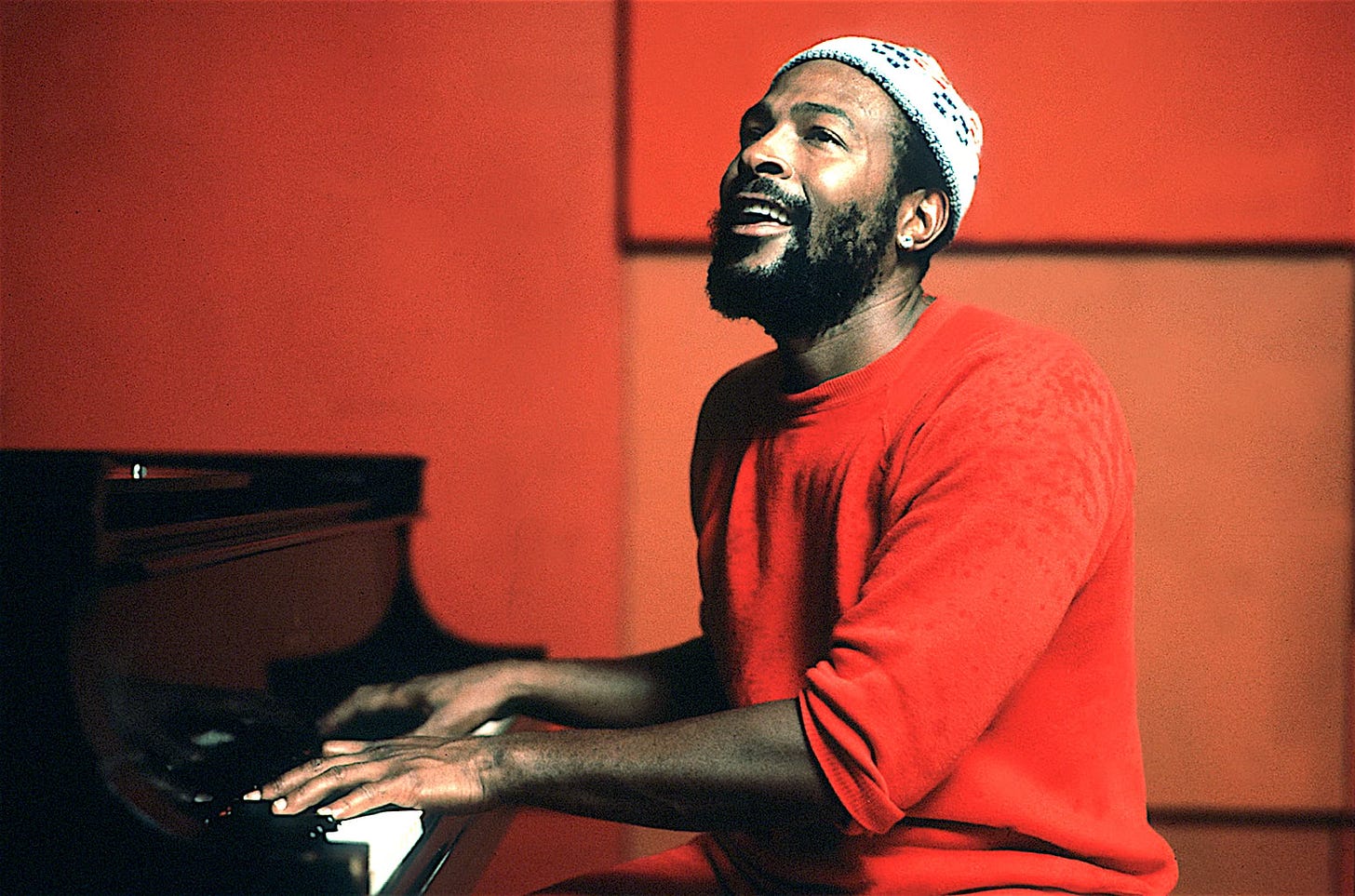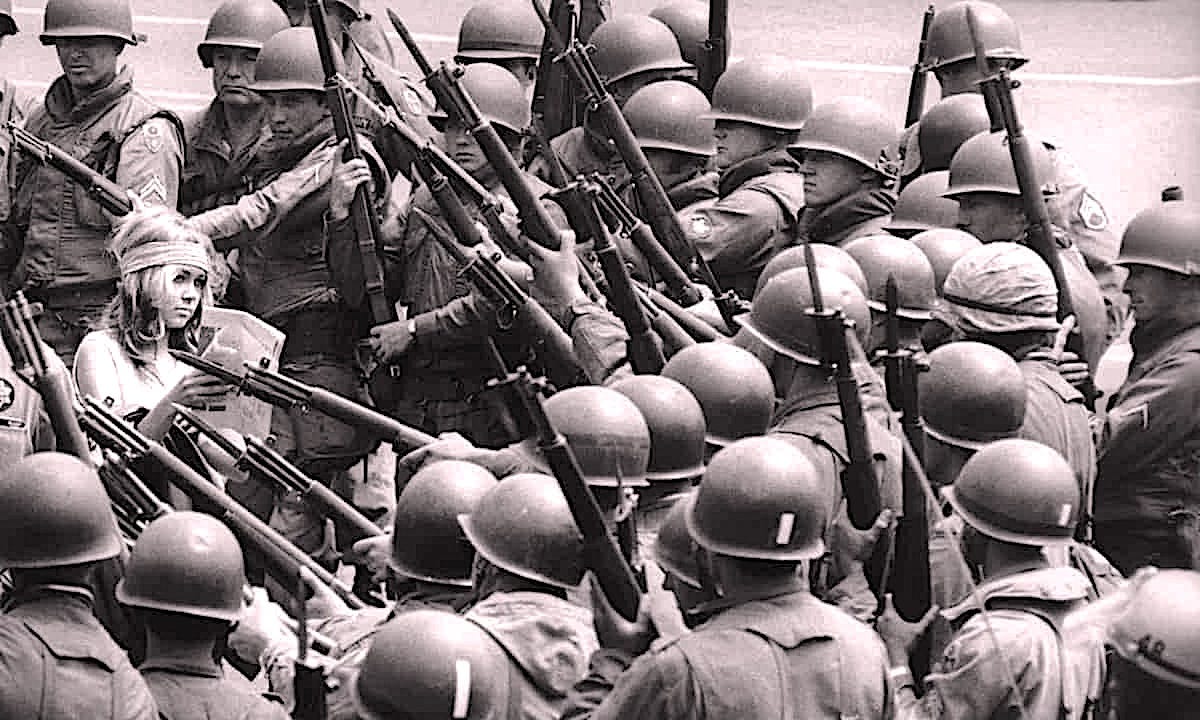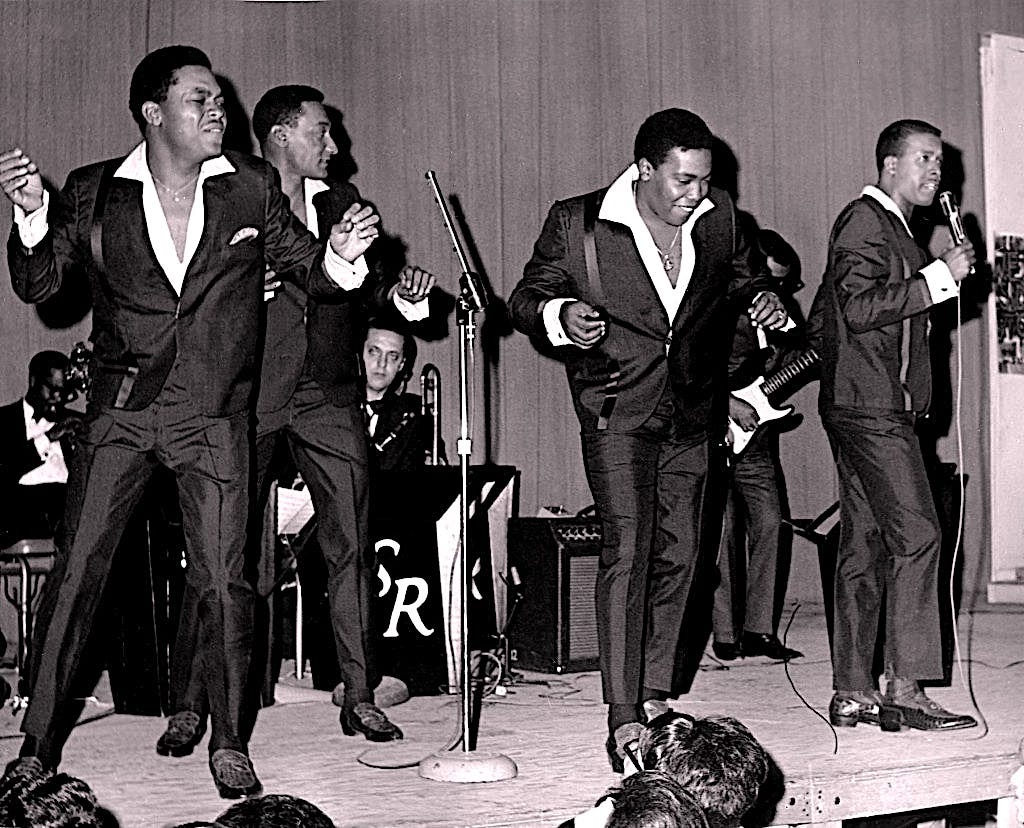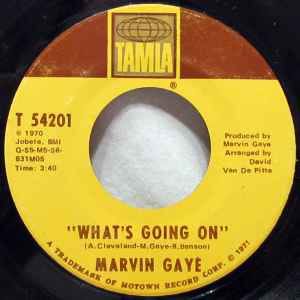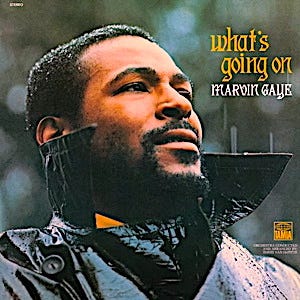“What’s Going On?”—Marvin Gaye’s Big, Holy Question
One of most graceful songs in popular music was released this month in 1971
“With the world exploding around me, how am I supposed to keep singing love songs?”—Marvin Gaye
It was during this month in 1971 that the game-changing single “What’s Going On” was released on Tamla/Motown Records by Marvin Gaye, the “soul music” pioneer who opened the genre to orchestral, jazz, and pop expressions while baring his tortured heart in song. He was coming out of a period of depression and dysfunction, and he had no support from Tamla/Motown, but the song went on to win multiple awards and still places on countless critics lists. Moreover, it was a practically a sacred catharsis for Gaye and the song went on to reach people around the world.
The lyrics were triggered by scenes of heavy-handed police brutality at Berkeley’s Peoples Park in California, witnessed in 1969 by song co-writer Renaldo “Obie” Benson of The Four Tops, then on a tour stop. Benson wondered why we were sending young people to Vietnam to be killed, then using violence to beat up on young people who had a legal right to express concerns about their own lives. What kind of mixed message is this?
Benson refined the lyrics with Motown staff songwriter Al Cleveland, and an early demo of the song was presented to singer-activist Joan Baez. She turned it down, as did The Four Tops, then topping the charts with high-powered hits like “Reach Out” and “I Can’t Help Myself” (The Tops finally tackled socially conscious material a few years later).
(Four Tops photo L-R: Obie Benson, Duke Fakir, Lawrence Payton, Levi Stubbs).
Benson later said, “My partners told me it was a protest song...I said 'no man, it's a love song about love and understanding. I'm not protesting, I want to know what's going on.’” Then the song was handed to Marvin Gaye, already troubled after he’d witnessed the 1965 Watts Riots, asking himself, 'With the world exploding around me, how am I supposed to keep singing love songs?'" Gaye took Benson and Cleveland’s idea and tailored it with a new melody, double lead vocal parts, and the majestic major 7th chords inspired by one of Gaye’s heroes Duke Ellington. Gaye’s newly added lyrics refracted on conversations he’d had with his brother Frankie, a Vietnam veteran who’d come home with PTSD. The final set of lyrics include allusions to Bible verses John 3:16-17.
With the help of esteemed Motown orchestrator David Van De Pitte, Gaye created the trailblazing arrangement we know today.
Appropriately, the B-side of the 45 was “God is Love,” a riff on Mark 12:30-31.
Motown president Berry Gordy was politically-avoidant, and it didn’t help that Gaye introduced the idea as “a protest song.” Gordy worried that Gaye was straying too far from the Motown formula. Gordy—who was also Gaye’s brother-in-law—wanted reruns of Gaye’s earlier hits like “How Sweet it Is,” “I Heard it Through the Grapevine,” and “Can I Get A Witness” with its gospel energy. Instead, Gaye longed to apply and make a difference on a musical podium ornamented by honesty and realism. Even in his pre-Motown 1950s doo-wop days, he aspired to raise people’s consciousness through music. By 1968 he was disenchanted with his solo material. While he exuded a well-groomed virile confidence on stage, he was more confident as a team player, making duet recordings with Mary Wells, Kim Weston, and Tammi Terrell—from 1966 onward they had a string of hits including “Ain’t Nothing Like The Real Thing” and “Ain’t No Mountain High Enough.”
They had remarkable chemistry and a lot of promise, but the duo ended when, in March 1970, the 24 year old Terrell died of complications from a brain tumor. This tragedy sent Gaye into an emotional bottoming-out and he let himself go physically. He even considered quitting music and wanted to go into pro football. To get him out of his depression, his friends in the Detroit Lions football team got him to exercise and buff up. Then he was presented with “What’s Going On” and the song gave him a new start on life.
Gordy initially hated “What’s Going On,” saying it was the worst thing he’d ever heard, and he complained that Gaye’s Dizzy Gillispie-style scat singing made it sound “old” and unhip. After Gordy turned it down, Gaye went on strike, refusing to record anything else until Gordy recanted and released it. Then, under a façade of compliance, Gordy covertly ordered Motown’s marketing division to put it out as a “soft release” (i.e. don’t promote this record) with the aim of causing a Gaye failure. Yet, despite Gordy’s opposition and sabotage, the world was hungry for this song and, in one week, the single went Top 10 and sold 200,000 units! Eventually it sold millions and became the title track of a landmark LP that revolutionized the “concept album” format and continues to sell briskly as a legacy title.
Here's my take, recorded live in 2002 at a coffee house in Williamsport PA. It was requested by the owner of the coffee house, and I learned it that afternoon before the concert:
“What’s Going On” keeps standing as one of the cornerstones of popular music and a flashpoint for the Civil Rights Movement and social justice—a celebration of asking the right questions and finding solutions.
#marvingaye #tamla #motown #godislove #berkeley #policebrutality #obiebewnson #fourtops #joanbaez #berrygordy #dizzygillispie #johnnyjblair #coffeehouse #tammiterrell




